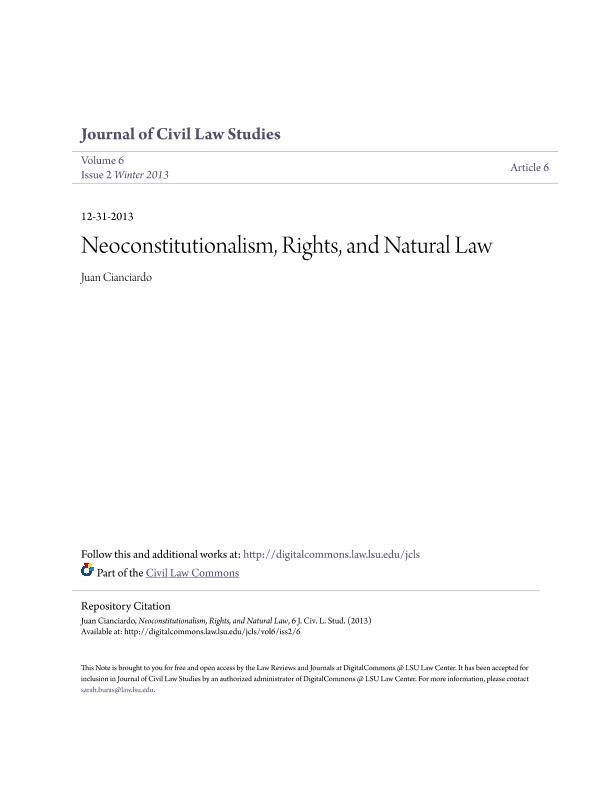Artículo
Neoconstitucionalism, Rights and Natural Law
Fecha de publicación:
12/2013
Editorial:
Center of Civil Law Studies
Revista:
Journal of Civil Law Studies
ISSN:
1944-3749
Idioma:
Inglés
Tipo de recurso:
Artículo publicado
Clasificación temática:
Resumen
Rights are, without a doubt, the most outstanding feature of contemporary legal systems. It can be argued that since the middle of the past century we are immersed in a culture of rights. Neoconstitutionalism is one among other such concepts that has been used to designate and study this phenomenon. The hypothesis we will attempt to address in this paper is that some of the central characters of our culture of rights, here termed as “neoconstitutionalism,” cannot be explained consistently without an explicit reference to natural law. We will specifically examine the connection between the assertion that there exist natural law principles of justice and the following characteristics of our culture of rights: a) the recognition of rights; b) the reference of state or national legal systems to supranational legal systems; c) constitutions as a result of a network of principles and rules; d) the principle of proportionality; and e) the principle of reasonableness. While the first three characteristics constitute the structure of any neo-constitutional practice, the two latter ones are features of the processes of legal reception and legal allocation of rights in such a legal practice. This paper aims to show that, ultimately, identifying, explaining, and understanding each and all of these five characteristics of contemporary legal culture depends upon the existence of a normative resort that goes beyond the legal culture itself.
Palabras clave:
Human Rights
,
Neoconstitucionalism
,
Principles
,
Proportionality
Archivos asociados
Licencia
Identificadores
Colecciones
Articulos(SEDE CENTRAL)
Articulos de SEDE CENTRAL
Articulos de SEDE CENTRAL
Citación
Cianciardo, Juan Carlos Mariano; Neoconstitucionalism, Rights and Natural Law; Center of Civil Law Studies; Journal of Civil Law Studies; 6; 2; 12-2013; 590-602
Compartir




